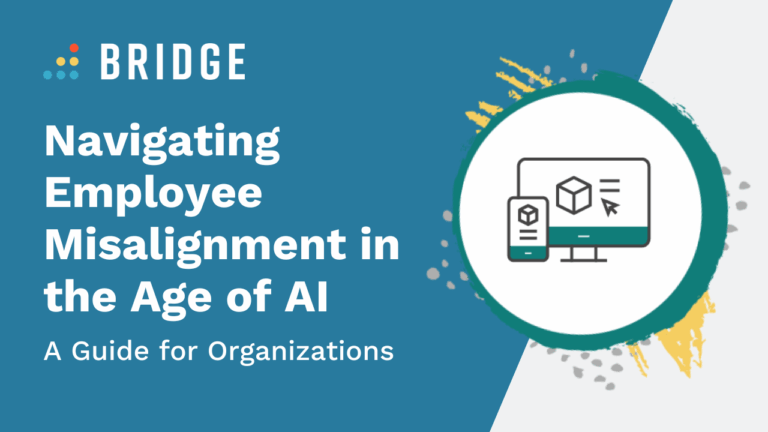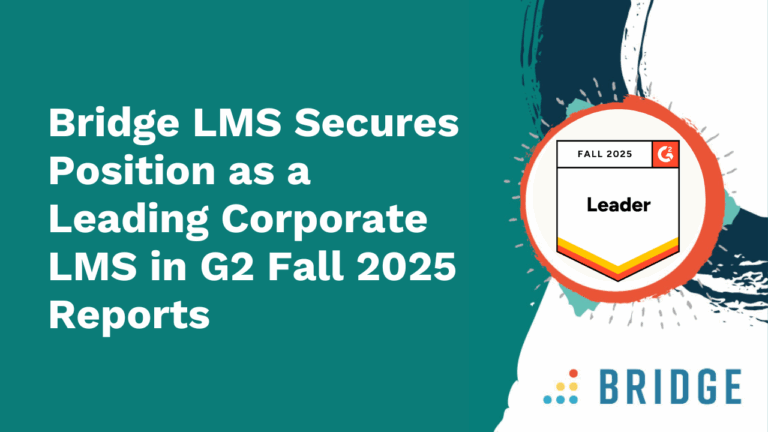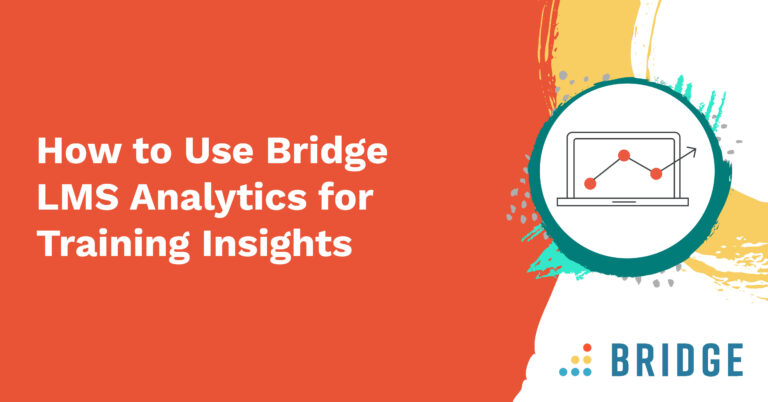A learning management system is an investment in your organization and its people. To get the most out of this platform and deliver long-term value, you need a solution equipped with the tools to address your unique business and industry demands.
Find out what mid-sized organizations should prioritize in a software solution and how to find a flexible, intuitive, scalable LMS suited to your business.
The Importance of Choosing the Right LMS
Every organization has its own training and development needs. Using a corporate LMS with the tools necessary to meet these needs allows you to effectively create, deliver, and scale your training programs without compromise.
Take, for example, the results from a survey conducted by Gartner to understand software buying habits. According to responses, 60% of buyers regret a software purchase, with this figure being highest among those in mid-sized organizations. These organizations often face negative repercussions, including a loss of productivity and competitiveness.
Among the top drivers of regret were mismatched vendor-stakeholder expectations and a higher-than-expected cost of ownership.
These findings underscore the essential role of software in business operations and the need to make the right choice. The buyers in the Gartner survey say they’d take the following steps to understand if a solution matches their needs and avoid regret during the software selection process:
- Using customer reviews to research vendors
- Clarifying goals and desired outcomes
- Improving stakeholder communication
When choosing a tech solution, you must ensure it suits your organization based on your goals and priorities. Partnering with a software vendor that understands and tailors the solution to your business and market can provide a high-value, friction-free experience.
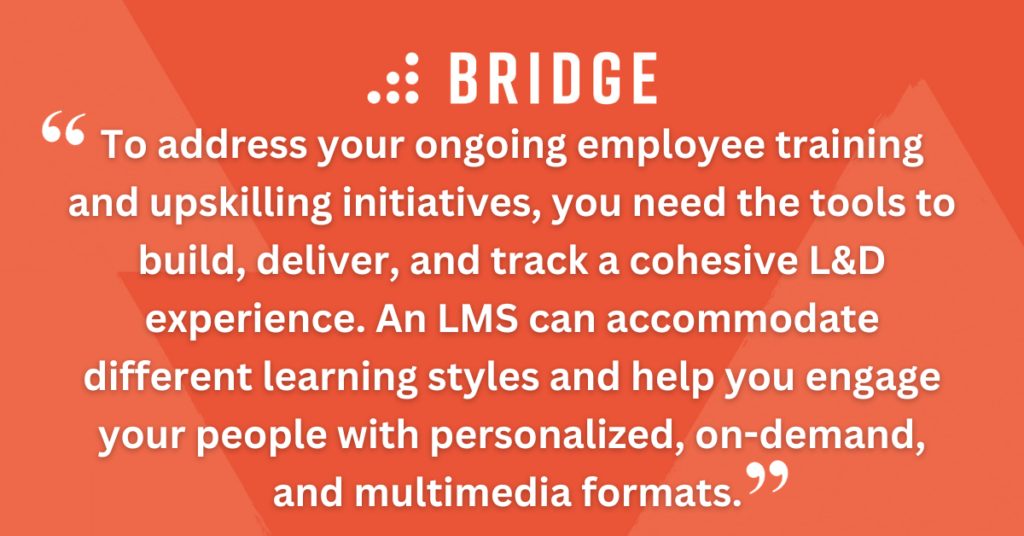
9 Questions to Consider When Looking for the Best Corporate LMS for Your Mid-Sized Business
Use the criteria to define the essential LMS features and functionalities when looking for a learning platform.
1) Does the LMS Go Beyond Mandatory Training?
There are a lot of learning management systems out there, but very few go beyond basic, mandatory training. To address your ongoing employee training and upskilling initiatives, you need the tools to build, deliver, and track a cohesive L&D experience.
An LMS can accommodate different learning styles and help you engage your people with personalized, on-demand, and multimedia formats. Determine the type of content that’s most relevant to your learners and who will author it. Depending on the size of your team, consider whether you can purchase off-the-shelf content to meet your training needs.
You should also consider how your people practice and apply learning in their roles, and seek ways to empower people in their growth and promote stronger knowledge retention and application over time. Key strategies include giving learners the ability to give and receive feedback and recognition, track manager-employee development conversations, and connect performance goals to personalized development opportunities.
FIND OUT MORE | ‘Learning Management Systems: The Centerpiece of Your Training Budget’
2) Is the LMS Able to Support Deskless Workers?
Is your training targeted to internal employees, or do you need to account for customers and partners, too? If you have a wider network of learners or your people don't work from a fixed location, an LMS with an accompanying mobile app will maintain access to the same training resources as your internal learners when offline or away from a desk.
3) What Can the LMS Measure?
To get business-wide buy-in for L&D, you need to demonstrate the impact with quantifiable metrics. After all, L&D teams considered strategic partners to their businesses are twice as likely to have a dedicated learning data analyst—according to findings collated by Bridge and its sister companies.
Having an LMS that offers visual reports and dashboards as well as the ability to automate distribution means you can quickly collate and share relevant insights. By bringing this data together, you're able to illustrate the value of training programs based on business objectives such as productivity, turnover, and profit.
MORE ABOUT METRICS | ‘Learning Analytics: 4 Essential Metrics and Strategies for L&D Success’
4) Does the LMS Have the Required Features For Compliance Training?
Every organization has compliance training obligations. If your industry requires that you meet complex or fast-changing compliance training requirements or have learners who require certification to perform their roles, you can use a learning platform to help you efficiently update and roll out content, and automate course delivery.
You can also mitigate risk by tracking mandatory training completions, alerting learners of upcoming compliance expiry deadlines, and scheduling re-enrollments.
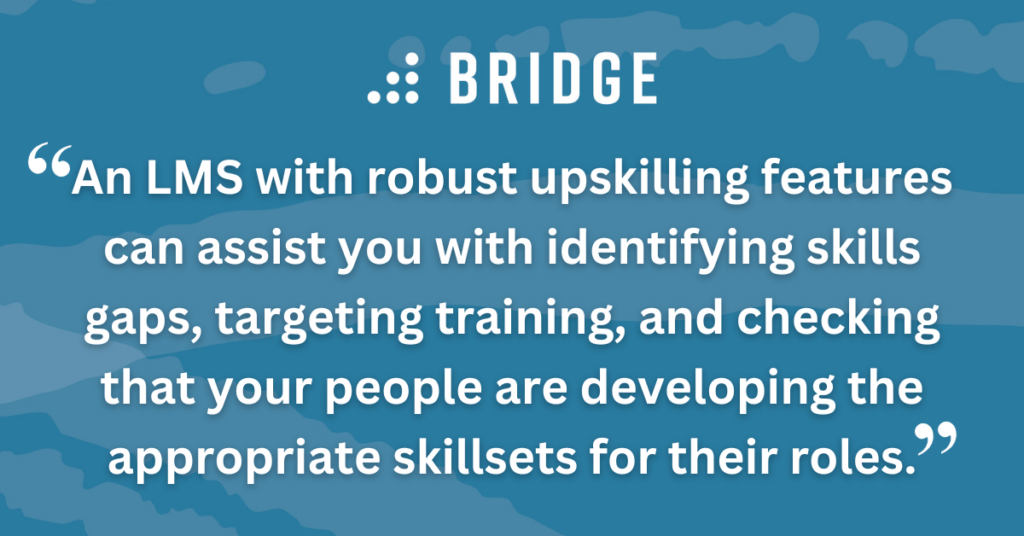
ADDITIONAL INSIGHTS | ‘Go Beyond Compliance Training: How an LMS Can Drive a Learning Culture’
5) Does the LMS Help Build Skills?
Don't just choose a solution that will meet today's needs—think about your organization's trajectory and the part your LMS will play in guiding it toward that future.
Use any information about future growth or strategic changes to predict how this could influence your software needs. You want to know that the platform you pick has a robust infrastructure to grow with your business and accommodate a growing number of users.
In addition, review the skills your organization will need in the future and whether your employees currently have these capabilities. An LMS with robust upskilling features can assist you with identifying skills gaps, targeting training, and checking that your people are developing the appropriate skillsets for their roles.
6) Is the LMS Easy to Use (For Admins and Users!)
Choosing a platform with easy-to-use navigation and an intuitive interface can simplify processes and speed up the time it takes to adopt the platform and onboard new users.
With a user-friendly platform, you can track training and compliance requirements and make strategic decisions without getting bogged down by technical issues. This benefits your learners, too—with a single destination for learning and development, they can easily find content relevant to their career development.
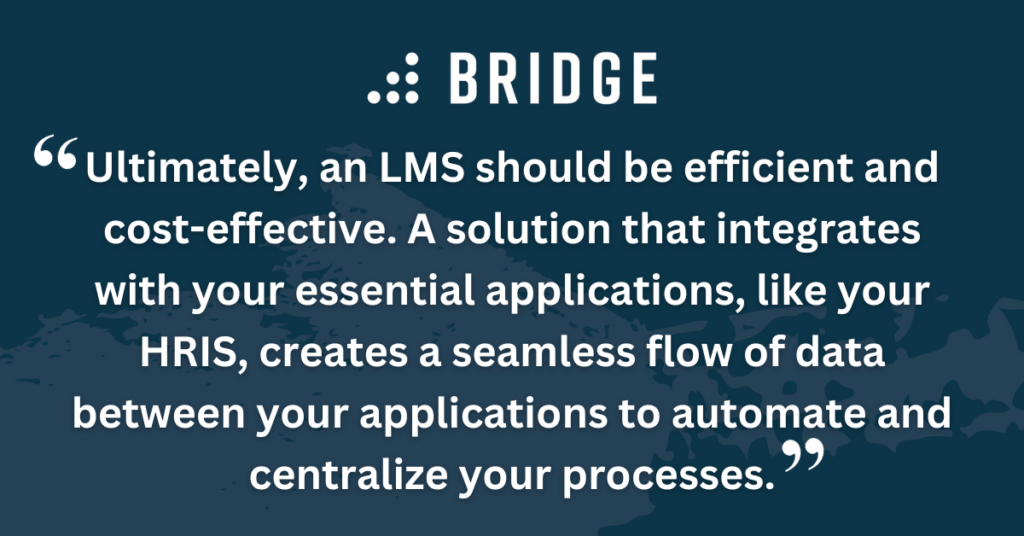
7) What Type of Support Comes With the LMS?
A hands-on LMS vendor will assist with ongoing platform maintenance and help you get the most out of your investment.
Researching your peers' experiences will give you an honest and reliable assessment of what to expect. Take the time to look at customer reviews, client testimonials, and industry awards to see how customers in similarly sized business and comparable industries find the service.
8) Does the LMS Integrate With Current Systems?
Ultimately, an LMS should be efficient and cost-effective. A solution that integrates with your essential applications, like your HRIS, creates a seamless flow of data between your applications to automate and centralize your processes.
Your chosen LMS must meet your industry standards and comply with relevant regulations. Ask a vendor about software updates and any provisions for backing up data and keeping your sensitive information secure.
RELATED READING | ‘5 Benefits of Integrating Your LMS With Your HRIS’
9) Does the LMS Come With Content?
Using an LMS that offers its own content is a useful way to fill any gaps in your course library. Your chosen solution should offer a range of built-in courses that you can quickly load into the platform and roll out to your learners.
In addition, you’ll want to check that an LMS integrates with third-party content providers.
Why Bridge Is The Right LMS For Mid-Sized Organizations
Bridge is well-placed to bring your L&D strategies to life and streamline your processes, eliminating inefficiencies and increasing productivity.
1) Award-Winning Customer Support
It’s important to know support is available when you need it. That's why the Bridge team is on hand 24/7. Customers can reach out to the team via phone, email, and live chat.
In addition, the team hosts regular training sessions and Q&As, and provides access to on-demand tutorials and guides.
SEE HOW CUSTOMERS RATE BRIDGE | ‘G2 Names Bridge a Mid-Market Leader With Highest User Adoption’
2) An All-in-One Training and Skill-Building Solution
Bridge gives HR and L&D teams a single destination for learning, development, upskilling, and performance. Within the platform is all you need to administer, automate, and plan your organization's L&D strategy, using real-time data to direct training and set a course for future growth.
Monitoring data with sophisticated, customizable reports and configurable metrics allows you to refine training programs, anticipate skills gaps, and show the value of L&D.
WANT TO LEARN MORE? | ‘3 Ways Bridge Can Help You Achieve Your Training Goals’
3) Fast Time to Value
A smooth and efficient customer onboarding and implementation process means you and your learners will be ready to dive into the platform from day one. Bridge has won awards for its speed of implementation and some customers can be ready to use the platform in as little as six weeks.
During onboarding, technical experts and customer success managers work closely with customers to put together a project plan, draft communication plans, and train admins and users.
4) Intuitive Authoring and Admin Tools
Bridge is known for its ease of use, making it simple to administer without prior LMS experience. One-click publishing from native and advanced authoring tools empowers the swift and seamless delivery of engaging eLearning content.
Admins can take advantage of automation features by enrolling learners in personalized pathways, exporting reports, and tagging courses with the appropriate skills.
5) Scalability and Customization
Flexible plans and pricing mean that Bridge can scale and grow with you, serving organizations with as few as 120 employees as well as mid-market and enterprise organizations.
With the ability to integrate over 1,000 third-party external applications and workflow tools, authentication solutions give you access to the tools you need at your fingertips.
Want to Learn More About Bridge’s LMS?
Bridge has helped thousands of organizations worldwide drive growth by bringing learning, employee development, and upskilling together in one easy-to-use platform. Contact us or check out the platform to learn more.


